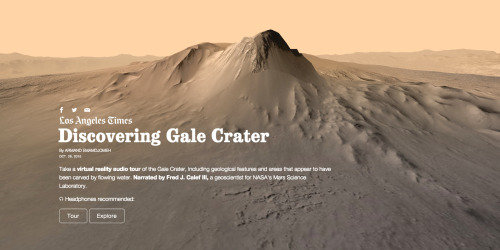Latest Posts by dotmpotter - Page 5
Silica nanoparticles could be used to repair damaged teeth

Researchers at the University of Birmingham have shown how the development of coated silica nanoparticles could be used in restorative treatment of sensitive teeth and preventing the onset of tooth decay.
The study, published in the Journal of Dentistry, shows how sub-micron silica particles can be prepared to deliver important compounds into damaged teeth through tubules in the dentine.
The tiny particles can be bound to compounds ranging from calcium tooth building materials to antimicrobials that prevent infection.
Professor Damien Walmsley, from the School of Dentistry at the University of Birmingham, explained, “The dentine of our teeth have numerous microscopic holes, which are the entrances to tubules that run through to the nerve. When your outer enamel is breached, the exposure of these tubules is really noticeable. If you drink something cold, you can feel the sensitivity in your teeth because these tubules run directly through to the nerve and the soft tissue of the tooth.”
“Our plan was to use target those same tubules with a multifunctional agent that can help repair and restore the tooth, while protecting it against further infection that could penetrate the pulp and cause irreversible damage.”
The aim of restorative agents is to increase the mineral content of both the enamel and dentine, with the particles acting like seeds for further growth that would close the tubules.
Previous attempts have used compounds of calcium fluoride, combinations of carbonate-hydroxypatite nanocrystals and bioactive glass, but all have seen limited success as they are liable to aggregate on delivery to the tubules. This prevents them from being able to enter the opening which is only 1 to 4 microns in width.
However, the Birmingham team turned to sub-micron silica particles that had been prepared with a surface coating to reduce the chance of aggregation.
When observed using high definition SEM (Scanning Electron Microsopy), the researchers saw promising signs that suggested that the aggregation obstacle had been overcome.
Professor Zoe Pikramenou, from the School of Chemistry at the University of Birmingham, said, “These silica particles are available in a range of sizes, from nanometre to sub-micron, without altering their porous nature. It is this that makes them an ideal container for calcium based compounds to restore the teeth, and antibacterial compounds to protect them. All we needed to do was find the right way of coating them to get them to their target. We have found that different coatings does change the way that they interact with the tooth surface.”
“We tested a number of different options to see which would allow for the highest level particle penetration into the tubules, and identified a hydrophobic surface coating that provides real hope for the development of an effective agent.”
Our next steps are to optimise the coatings and then see how effective the particles are blocking the communication with the inside of the tooth. The ultimate aim is to provide relief from the pain of sensitivity.
University of Birmingham
Nanotechnology World Association

109-Year-Old Woman Said Secret To Long Life Is Avoiding Men







Brain, Bone and Blood Vessels Coming Hot Off the Press
Could the days of custom clavicles and bespoke bladders produced just in the knick of time for suffering patients be around the corner?
While keeping an eye on tissue engineering studies, we’ve been seeing some significant wins in the lab that are bringing the sci-fi future of on-demand 3-D printed organs, bone and blood vessels closer.
Harvard and Brown bioengineers are taking their own routes to build complex tissues in customized 3-D printers. And just the other week, we reported on newly unveiled work at the University of Florida to print complex soft structures in baths that could one day birth replacement human parts along with soft robots.
Now, Carnegie Mellon engineers reported on Friday that they had successfully printed simplified proof-of-concept anatomical structures like mini femurs, blood vessels and brains suspended in soft gelatin. Learn more and see a video below.
Keep reading
A reliable way to make people believe in falsehoods is frequent repetition, because familiarity is not easily distinguished from truth.
Daniel Kahneman, Thinking, Fast and Slow

Three quarters of Britain’s juniper is found in Scotland, where it’s important not only to local gin production but also to wildlife, such as the juniper shield bug. Plantlife Scotland has published a free guide to help both professional and amateur botanists and horticulturalists identify, survey and protect the plants. Anyone can participate in the group’s survey and guardianship project.
(via Protect British juniper or risk losing gin’s distinctive flavour (Wired UK))
Meet Hannah Herbst, a 15-year-old from Boca Raton, Florida, who just might be the nation’s top young scientist. Earlier this month, Herbst won a $25,000 prize with a very cheap invention: a prototype probe that converts the movement of the ocean’s currents into energy and costs just $12 to make. Out of nine other middle-school finalists, Herbst was awarded first place in the 2015 Discovery Education 3M Young Scientist Challenge.
This 15-Year-Old’s Invention Converts Ocean Currents Into Energy—for Cheap | GOOD

Biologists at the University of Rhode Island were studying the nitrogen content of streams and noticed something odd: whenever there were beaver ponds upstream, nitrogen levels dropped. Beaver ponds slow down river water, and they mix it with organic matter, which must have an effect on river chemistry, but scientists didn’t know exactly what was happening in that murky water. So they made soda-bottle-sized “ponds” that let them study variations on the conditions the beavers set up in their real-life ponds. And they found a kind of reverse nitrogen fixation process was occurring — call it “denitrification.” Bacteria in the dirt and the plant debris turned nitrates into nitrogen gas. The gas bubbled up to the surface and mixed with the atmosphere once more. In some cases, the level of nitrogen in the water dropped 45%.
(via Scientists Acquire More Proof That Only Beavers Can Save the World)
It’s estimated that the world yields 110 million tons of citrus fruits annually, with oranges accounting for more than half of that production volume. Given that not every part of the fruit is put to use, that’s a lot of waste. But researchers at Flinders University in Adelaide, Australia, have made a breakthrough that will allow humans to use citrus waste to suck the highly poisonous metal mercury out of land and sea.
Orange Peel Waste Can Help Remove Mercury Pollution From Oceans | GOOD
Yet despite decades of relegation to roles as tourist attractions or advertising gimmicks, airships may be on the verge of a comeback. This resurgence will be fueled not by impractical nostalgia or fandom, but by incredible advances in airship technology that have made these craft both immeasurably safer than their predecessors, and perfect vessels for certain niche conditions. And it seems like this phoenix-like rebirth of everyone’s favorite forgotten tech might just begin in the Canadian north.
How Modern-Day Dirigibles Can Plug The World’s Transit Gaps | GOOD
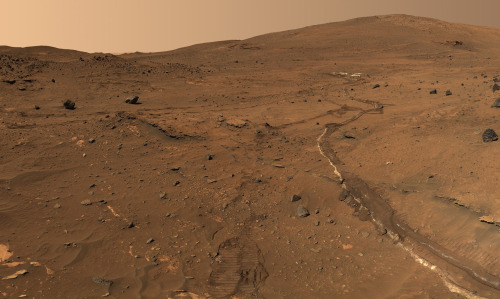

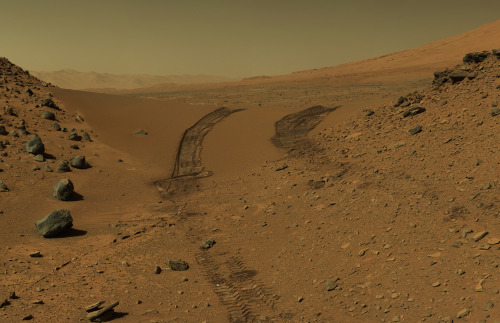

We actually have pictures that great of Mars, a planet about 225 million kilometers (140 million miles) away from us. Image copyright: NASA
#Chocoholic: We sure love our chocolate, but it'd be a lot sweeter if it wasn't coming from child labor.

WATCH the short video here.
+2 million children work in cocoa production in Ghana and the Ivory Coast. This year, Nestlé, Mars Bar, and HERSHEY'S were sued for knowingly partnering with suppliers that use child workers.
DEMAND that these chocolate companies become Made In A Free World here: madeinafreeworld.com/action!

Did you know that 80% of all terrestrial plants and animals live in forests? That’s why the Global Goals for Sustainable Development, adopted at the United Nations in New York in September, seek to protect forests and biodiversity. Which Global Goal means the most to you? See the full list here: www.un.org/sustainabledevelopment







Brain, Bone and Blood Vessels Coming Hot Off the Press
Could the days of custom clavicles and bespoke bladders produced just in the knick of time for suffering patients be around the corner?
While keeping an eye on tissue engineering studies, we’ve been seeing some significant wins in the lab that are bringing the sci-fi future of on-demand 3-D printed organs, bone and blood vessels closer.
Harvard and Brown bioengineers are taking their own routes to build complex tissues in customized 3-D printers. And just the other week, we reported on newly unveiled work at the University of Florida to print complex soft structures in baths that could one day birth replacement human parts along with soft robots.
Now, Carnegie Mellon engineers reported on Friday that they had successfully printed simplified proof-of-concept anatomical structures like mini femurs, blood vessels and brains suspended in soft gelatin. Learn more and see a video below.
Keep reading

Holy shit! The single reason Republicans have no right to exist is climate denial on behalf of energy companies.

I think it’s a cool engineering experiment but if he really is pursuing this to give green spaces to under served urban communities, then proposing it to be built in LES is fallacy. That area already has parks close by and is inhabited by at least the upper 30% (economically) of the city. What would be spectacular is if the technology they’ve developed for channelling sunlight could be used in subway stations that people already use. Plants and sunlight there would make the lives of millions of commuters across the subway network so much better. This disused trolley place should be made into an urban farm me thinks :)










Breathtaking Images of Underwater Life Captured by Freediving Photographers Alex Voyer and Alex Roubaud





For more on the Fermi Paradox and why alien life hasn’t found us yet. (Infographic via futurism)
“A little chocolate won’t do any harm.” You’ve likely heard your chocolate-loving friend utter this sentence on more than one occasion, or maybe it’s a mantra that you use yourself. But frankly, it undersells chocolate’s myriad benefits. This sweet is capable of much more than simply “not harming” you – it can help you. In fact, there are scientifically-backed studies that prove chocolate can help you live a better life (and we’re not just talking about the happiness you derive from its deliciousness).

An EPIC View of Earth
“Look again at that dot. That’s here. That’s home. That’s us.”
Carl Sagan wrote those words in his book Pale Blue Dot: A Vision For The Human Future In Space. His now-famous ode to our home planet (listen to the full passage here, in animated form) is perhaps our most poignant and humble reminder of the exquisite beauty and shared fragility of this planet we call home.
NASA is now bringing us a daily reminder of that message, thanks to the EPIC camera (a very appropriately named camera, in my opinion) on board NOAA’s DSCOVR satellite. You can see some of its handiwork in the image sequence above.
DSCOVR’s official space job is to observe weather on and around the sun, to extend its mechanical finger into the solar wind and measure how strongly that stream of charged particles is gusting toward Earth. It does this job from a special spot in space called the L1 Lagrange point. If you were to draw a line between us and the sun, DSCOVR would be sitting along it, like so (not to scale):

That’s a convenient place to put a spacecraft, especially one whose job it is to stare at the sun. See, DSCOVR is nestled inside a pocket where it’s tugged equally by the Earth’s and Sun’s gravity, like a stalemate in an orbital game of tug-o-war. Gravity does all the work, and the spacecraft doesn’t need to maneuver much to stay in position. There’s a few of these gravity-neutral Lagrange points out there, as you can tell in the image above, and we’ve got spacecraft residing at all of them.
As a side effect of its sun-staring mission, DSCOVR’s backside happens to be looking back at Earth full-time. In a way, I think that makes it a different sort of moon.
NASA doesn’t like to let any opportunity go un-scienced, of course, so they decided to slap a camera on DSCOVR’s rear, the one named EPIC, and use their stable perch to keep a regular eye on us. Good lookin’ out, NASA.
A little change in perspective can do a planet good. In 1990, from a vantage point beyond Pluto, Voyager 1 turned its cameras back toward home to take one last look, giving us the image that inspired Carl Sagan’s ode to ol’ Dotty Blue:

This was not an easy shot to take. Voyager’s camera wasn’t the fancy digital type like most of us have in our phones. It was essentially an old-fashioned black and white tube TV in reverse, relying on colored filters held in front of the camera to highlight different wavelengths of light. Voyager stored its image data on magnetic tape, and each of the shots took more than five hours to reach Earth. Sagan and NASA’s planetary science team had to practically move the heavens (since they were unable to move the Earth) in order to take that picture.
Now consider the effect this picture has had. That’s home. That’s us. Even if you weren’t born in 1990, everyone and everything that made you is in and on that hazy blue speck. I hope you never lose sight of how amazing it is to view our planet from this perspective.
Luckily, you can get a reminder every day. The DSCOVR satellite is now sending roughly a picture an hour back to Earth, 24/7/365. That’s a near real-time view of our home. Go take a look. It’s pretty epic.
To see a daily look at what a day on Earth looks like, check out EPIC’s daily updates here.










Breathtaking Images of Underwater Life Captured by Freediving Photographers Alex Voyer and Alex Roubaud







YouTube Wants Everyone To Watch This New Movie About Girls Who Code
“Codegirl” will stream for free on YouTube from Nov. 1 - 6.


Emily, a process engineer at GE Aviation in Auburn, AL is all suited up to remove a print from a Direct Metal Laser Melting machine. These machines additively manufacture metal components for CFM’s best-selling LEAP jet engine, printing in 20 micron layers — roughly 1/3 the width of a human hair.

The PBL Climate Pledge INDC tool tracks the emission reduction proposals and policies that countries are submitting in the run-up to the Paris Climate Summit. Updated each time new countries submit their proposals, the tool gives up-to-date information on the effects of these proposals on the projected emissions of greenhouse gases. Data via PBL.







Brain, Bone and Blood Vessels Coming Hot Off the Press
Could the days of custom clavicles and bespoke bladders produced just in the knick of time for suffering patients be around the corner?
While keeping an eye on tissue engineering studies, we’ve been seeing some significant wins in the lab that are bringing the sci-fi future of on-demand 3-D printed organs, bone and blood vessels closer.
Harvard and Brown bioengineers are taking their own routes to build complex tissues in customized 3-D printers. And just the other week, we reported on newly unveiled work at the University of Florida to print complex soft structures in baths that could one day birth replacement human parts along with soft robots.
Now, Carnegie Mellon engineers reported on Friday that they had successfully printed simplified proof-of-concept anatomical structures like mini femurs, blood vessels and brains suspended in soft gelatin. Learn more and see a video below.
Keep reading




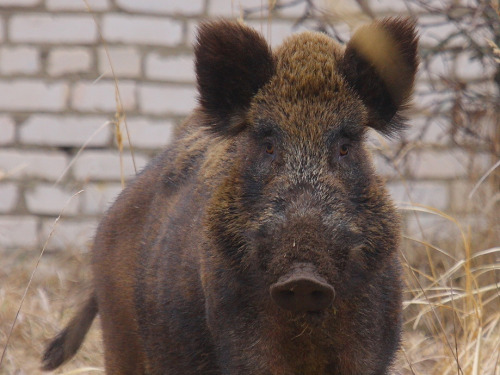
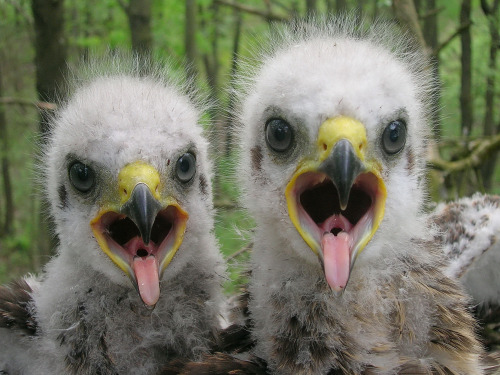
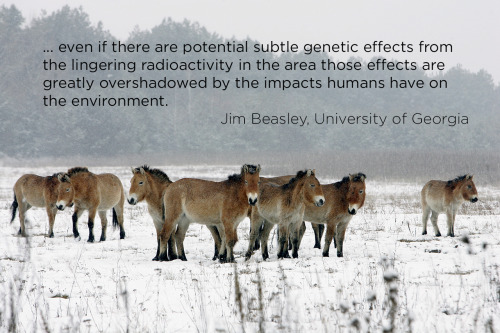
On April 26, 1986, a power surge caused an explosion at the Chernobyl Nuclear Power Plant near Pripyat, Ukraine. A large quantity of radioactive material was released.
On May 2, 1986, the Soviet government established a “Zone of Alienation” or “Exclusion Zone” around Chernobyl – a thousand square miles of “radioactive wasteland.” All humans were evacuated. The town of Pripyat was completely abandoned.
But the animals didn’t leave. And a new study, published this month in Current Biology, suggests they are doing fine. “None of our three hypotheses postulating radiation damage to large mammal populations at Chernobyl were supported by the empirical evidence,” says Jim Beasley, one of the researchers.
In fact, some of the populations have grown. These photos (mostly taken by Valeriy Yurko) come from the Belarusian side of the Exclusion Zone, and area called the Polessye State Radioecological Reserve. Kingfisher, elk, boar, baby spotted eagles, wild ponies, moose, rabbits, and wolves all make their home in the park. In some ways, human presence is worse for wildlife than a nuclear disaster.
Image credits:
1986 Chernobyl - ZUFAROV/AFP/Getty Images
Wildlife photos - Valeriy Yurko/Polessye State Radioecological Reserve
Ponies in winter - SERGEI SUPINSKY/AFP/Getty Images



There’s A Charming Treehouse Colony In Germany, Calling Your Name
This is Robin’s Nest Hotel in Hessen, Germany. It’s far from civilization: You’ll have to travelsnaking roads up a mountain until you reach the forested alcove of incredible treehouse structures. Owner Peter Becker built them as a hotel after realizing he was “missing something” in the busy city, as he told online magazine iGNANT.

Now a new filtering device, invented by a US teenager, could provide a cheap and easy way to purify water.
The renewable heavy metal filter, designed by 18-year-old Perry Alagappan, removes 99% of heavy metals from water that passes through it. The filter, built from graphene nanotubes, can be rinsed with a vinegar concentrate and reused. The highly concentrated waste can then be evaporated, leaving a deposit of pure metal that can be used in many different applications.
Alagappan, who was awarded the Stockholm Junior Water Prize at this year’sWorld Water Week, said the filter cost just $20 (£13) to make, up to five times less than existing reverse osmosis technology.
“I became interested in water purification when I visited my grandparents in India, and saw with my own eyes how electronic waste severely contaminated the environment,” said the recent high school graduate from Houston, Texas, on winning the prize.

Earth Could Lose a Third of Its Topsoil
You might think that dirt doesn’t matter that much — after all there seems to be so much of it all over the planet.
But researchers warn that the world’s precious supply of topsoil — which we need to grow food crops, absorb excess carbon and supply us with new antibiotics — is being lost faster than it can be replenished through natural processes. And the decreasing supply of soil could have a catastrophic effect on agriculture and the world supply of food.
The UN, which designated 2015 as the International Year of Soils, warns that 33 percent of the planet’s soil resources are being degraded due to erosion, pollution, acidification and nutrient depletion — destructive processes that are caused by bad land management. And unless new approaches are adopted, the amount of productive farmland on Earth per person will only amount to one-fourth of the amount available in 1960.
In December, the UN is set to release a report on the state of the world’s soil, and it’s likely to present an even more grim picture, according to a preview in New Scientist. We’re losing soil at the rate of 30 soccer fields per minute, and if we don’t slow the decline, the planet’s entire supply of soil for farming could be gone by 2075.
